Movie monsters of the 1980’s and 90’s have been a huge influence on my personal artwork, and I wanted to make something BIG that I could use for both Halloween and Comic Con. The Alien Queen, from “Aliens 2,” is savage and frightening, but also had a lot of potential to be elegant. When I do a costume of an existing character, I like to put a little spin on it rather than going for something completely movie accurate. My Alien Queen is bejeweled, like royalty, and could be the center of attention at any cocktail party. Whether that’s because of her excellent taste in fashion, or her ability to dislodge a human head from it’s spine in under 5 seconds, really depends on the day.
The Headpiece Pattern
The first step was to create a pattern for the headpiece. I started to map this out on tracing paper, but quickly realized I needed to be way better at math to pattern something this large and this intricate. Fortunately, there are entire online communities dedicated to the Alien and Predator movies, wherein you can find 3-D models of the heads, armor, etc. for free use. An amazing artist (if I can find the link again I will definitely be sending a thanks) modeled the Queen and converted it into a printable Pepakura pattern. For those who don’t know, Pepakura is the art of cutting, folding, and gluing paper to form 3-D objects. The pattern was printed flat on about 50-60 sheet of cardstock, which I X-acto cut and glued together over the next 2 months.
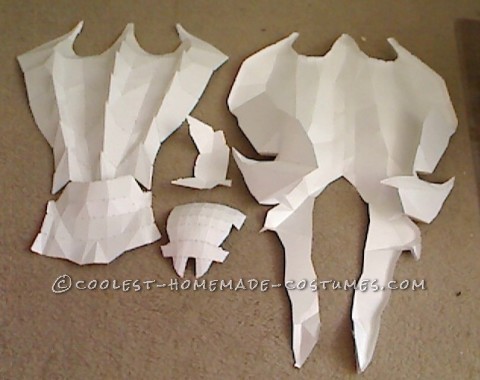
Make it Strong!
Once the Pepakura model was assembled, I brushed on several layers of Bondo boat resin. It’s really magical stuff! It hardened the head model into a durable object; no more shifting around on the glued hinges. It also allowed me to keep the head hollow and lightweight. I did use some plastic drinking straws as vertical braces inside the head, but there was no need for masses of filler. Once all the Bondo was dry, I used Free Form air clay from Smooth on to round out the dome of the head and some of the horns. I chose to keep the modern geometric look of the pepakura on the shield, but wanted the face to be smooth and organic. Expect to spend some time sanding the resin and clay if you weren’t careful and smooth with your initial application.
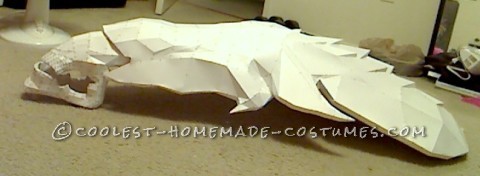
Painting
For the paint phase, I started with some medium gray primer, just to get a base going. I was really excited about the Rustoleum black “hammered” finish spray paint I bought, thinking it would be a little more organic –like insect armor- than regular gloss black. Honestly, I was a little disappointed with this stuff. The hammered finish was not very prominent, and the black looked more like gunmetal gray in the sun. I needed to darken it, but still didn’t want to go with cheap-o gloss black. I decided to try some black lens tint, usually used on car taillights, for a semi-transparent black gloss over the top. The lens tint was perfect! Slick coverage that gives a nice extra dimension to the color in the sun, and as simple to use as regular spray paint.
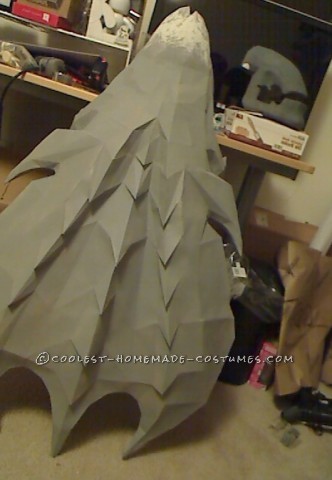
How Am I Going to Wear This??
Figuring out how to make this wearable was perhaps the most challenging part. I tried different fulcrum points and adding counterweight in the face to balance the shield. Purely through trial and error, I found the headspace that would be the most balanced and pretty much just crammed a black foam bike helmet in the hollow of the piece. After several tests to be sure of placement, I locked it in with E-6000 and Free form clay.
Rhinestones and Spine
Attaching the jewels was a surprisingly intense portion of the project. I knew I wanted the headpiece to be glamorous, but not gaudy. Before gluing the stones on, I plotted out my patterns by temporarily attaching them with removable poster putty. Then, one by one, I went back and traded poster putty for E-6000, placing each stone by hand. I decided to concentrate the jewels nearest the face, with a cresent above the head dome sort of where you might place a tiara. The stones on the shield are placed more sparsely, in clusters that felt organic (and fabulous). I found the dress at Goodwill and felt it worked well with my sparkly monochrome palette.
Building the spine was pretty straightforward. A piece of flexible aluminum conduit makes a nice natural spine. I filled it with foam gap filler and held it into the curved shape I wanted until the foam expanded and hardened. When my arms got tired I placed it between two opposing heavy flower pots, to keep holding the curves for me. Once it was dry I spray painted it, then applied the vertebrae. Each vertebrae is made from 2 interlocking pieces of sheet foam. I made the pattern on paper (again, just trial and error) and then made a few different sizes based on the master. I used thin black elastic to make easy shoulder straps, but you could use any material that suits your costume if you like them more prominent.
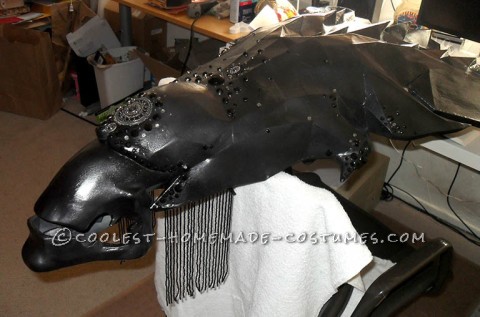
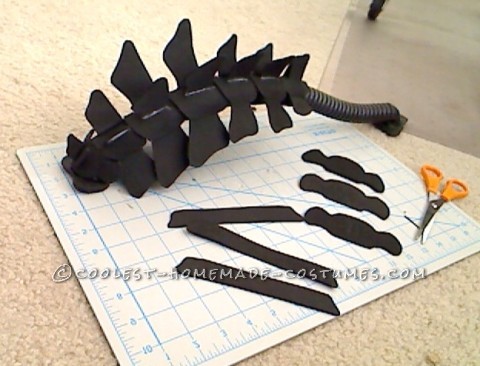
Presenting, Her Majesty.
I’m really thrilled with the end result and learned a ton of new materials knowledge along the way. Friends have been wowed by the photos so far and I can’t wait to get in front of some Halloween and Comic Con crowds!
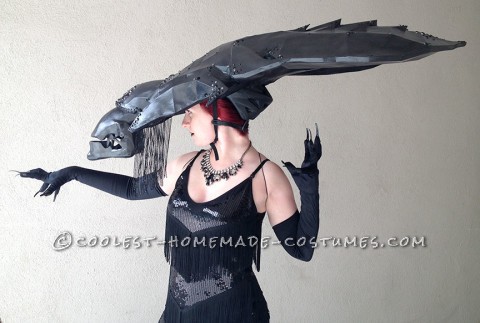
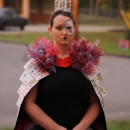
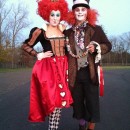
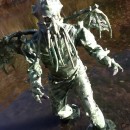
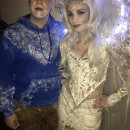

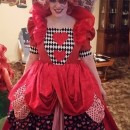


Your comment has been sent successfully.